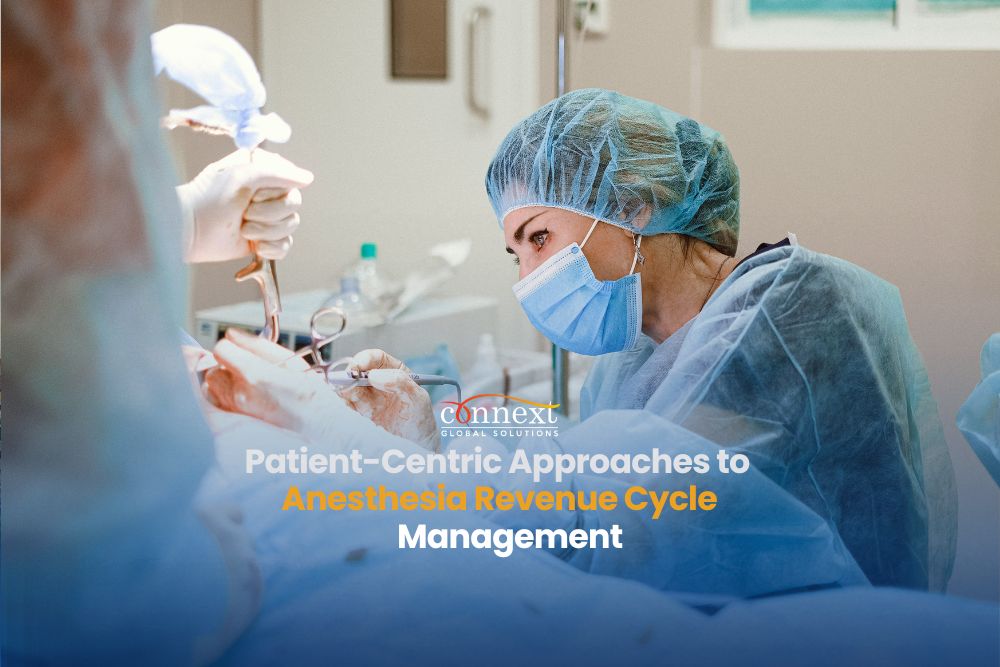The article aims to discuss Patient-Centric Approaches to Anesthesia Revenue Cycle Management.
Introduction
As healthcare providers strive to keep up with the ever-changing landscape of modern medicine, one area that cannot be overlooked is revenue cycle management (RCM).
In particular, anesthesia revenue cycle management has become a key focus for many hospitals as they seek to balance their financial goals with the need to provide excellent patient care.

Photo by Anna Shvets
Patient-Centric Approaches to Anesthesia Revenue Cycle Management
Revenue cycle management is a critical aspect of healthcare, but it can also be complex and challenging to navigate. In recent years, many hospitals have realized the importance of prioritizing patient satisfaction alongside their financial goals. This is particularly true in the field of anesthesia, where patient-centered care can significantly impact outcomes.
In this article, we will introduce the concept of patient-centric anesthesia revenue cycle management and provide practical advice for hospitals looking for a revenue cycle service center.
Understanding the patient-centric approach
Patient-centered care is a philosophy that puts the patient at the center of the healthcare experience. It involves understanding and addressing the unique needs and preferences of each patient, as well as involving them in their own care decisions. In anesthesia, this approach can lead to better outcomes and increased patient satisfaction.
Putting the patient first in anesthesia RCM has several advantages. Firstly, it enhances patient satisfaction by minimizing the financial stress associated with medical procedures. Happy patients are more likely to return for future care and recommend the facility to others. Secondly, it improves a hospital’s reputation, strengthening its position in the competitive healthcare market.
Here are the steps that will ensure patients are at the front and center when it comes to any healthcare facility’s anesthesia revenue cycle management process.
Communication and Transparency
Pre-operative education
Taking on a patient-centric approach begins before the procedure happens, and it starts with educating patients about anesthesia-related costs and insurance coverage during preoperative consultations. By providing transparent communication during preoperative consultations, hospitals can help patients understand what to expect and avoid any surprises after treatment.
Billing transparency
Transparent billing practices are another key component of patient-centric revenue cycle management. Hospitals can improve transparency in anesthesia billing by providing clear and easy-to-understand billing statements, as well as offering support channels for patients with questions or concerns.
Patient empowerment
Financial counseling
Offering financial counseling to patients is an excellent way to empower them and help them navigate the often-complex world of healthcare costs. Financial counselors can work with patients to understand their insurance coverage and explore payment options, ensuring that they can receive the care they need without undue financial burden. Likewise, this empowers patients to make informed financial decisions.
Self-service tools
Self-service tools are becoming increasingly popular in healthcare, and for good reason. By providing patients with access to billing information and payment options through online portals or mobile apps, hospitals can streamline the billing process and make it easier for patients to manage their healthcare expenses. Consequently, the use of these tools enhances patient engagement and satisfaction.
Streamlining the billing process
Simplified billing statements
Complex billing statements can be overwhelming. Hospitals can simplify their anesthesia billing statements, making them more user-friendly and reducing the chances of patient confusion. This can be done by using plain language, breaking down costs into manageable chunks, and providing visual aids where possible.
Billing inquiries and support
Establishing responsive customer service channels for billing inquiries or concerns is crucial, as this would make patients feel supported and have access to assistance when they need it. Through patient-support channels that answer billing questions or concerns, hospitals can improve patient satisfaction and strengthen their reputation.
Patient feedback and improvement
Gathering patient feedback
Collecting feedback from patients regarding their billing experience is an important part of patient-centric revenue cycle management. Hospitals can use surveys, focus groups, or other methods to gather input from patients and better understand their needs.
Implementing improvements
Listening to patient feedback is only valuable if hospitals take action based on that feedback. Facilities can implement changes based on their patients’ input, such as simplifying billing statements or offering more self-service tools, to improve the patient experience and boost satisfaction.
Best practices for communicating with patients about anesthesia-related costs and insurance coverage
1. Preoperative consultation
During preoperative consultations, hospitals should communicate clearly and transparently with patients about anesthesia-related costs and insurance coverage. This includes explaining any out-of-pocket expenses the patient may incur, such as deductibles or copays, and discussing any potential insurance issues that could arise.
2. Plain language
When discussing anesthesia-related costs and insurance coverage with patients, hospitals should use plain language that is easy for patients to understand. Avoiding medical jargon or technical terms can help ensure that patients fully comprehend the information being conveyed.
3. Written materials
Providing written materials to patients can be a helpful way to reinforce valuable information about anesthesia-related costs and insurance coverage. Hospitals can create brochures, handouts, or other materials that explain the billing process in clear and simple terms.
4. Follow-up communication
After treatment, hospitals should follow up with patients regarding their anesthesia-related costs and insurance coverage to ensure that any questions or concerns are addressed promptly. This can help prevent surprises down the line and improve patient satisfaction.
By implementing these best practices for communicating with patients about their anesthesia-related costs and insurance coverage, hospitals can provide a more patient-centric approach to revenue cycle management while also improving financial outcomes.
Conclusion
Patient-centric anesthesia revenue cycle management is crucial for hospitals seeking to balance their financial goals with patient satisfaction. By prioritizing transparent communication, empowering patients with financial counseling and self-service tools, streamlining the billing process, gathering patient feedback, and ensuring compliance and quality assurance, hospitals can provide excellent patient care while also achieving their revenue goals.
Here at Connext, we offer revenue cycle management services that prioritize patient satisfaction and help hospitals achieve their financial objectives. Contact us today to learn more about how we can assist your hospital in achieving patient-centric revenue cycle management.
If you need help with your revenue cycle management, outsource RCM and other Healthcare services to Connext today.
Follow us on:
Facebook: Connext
LinkedIn: Connext
Instagram: @connextglobalsolutions_
Twitter: @ConnextPh









